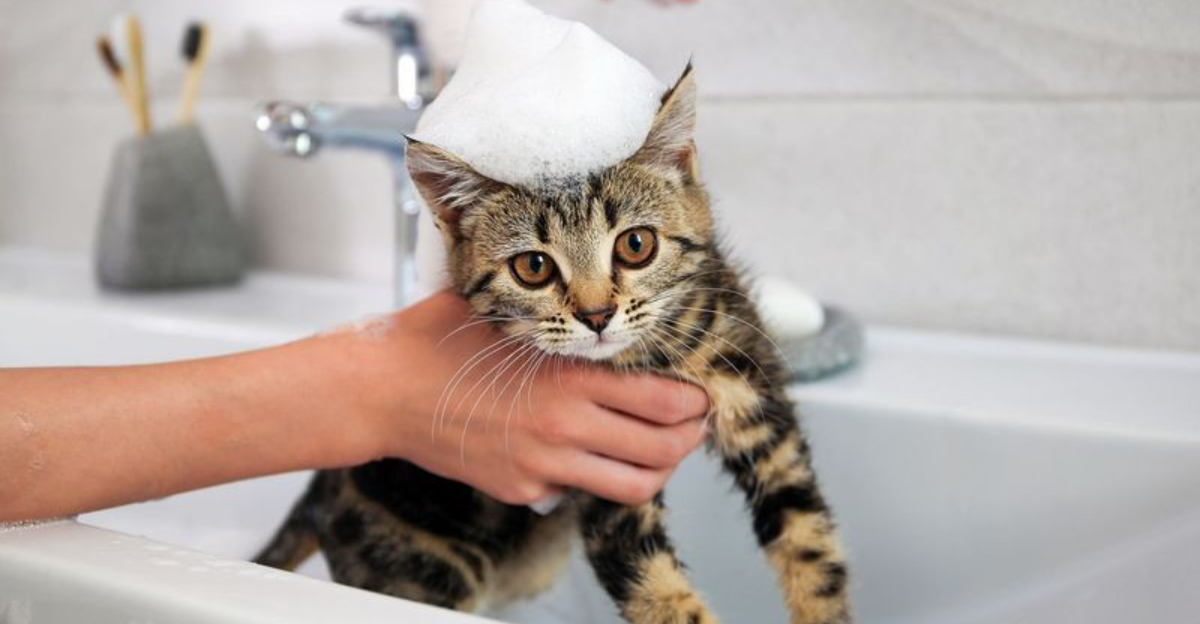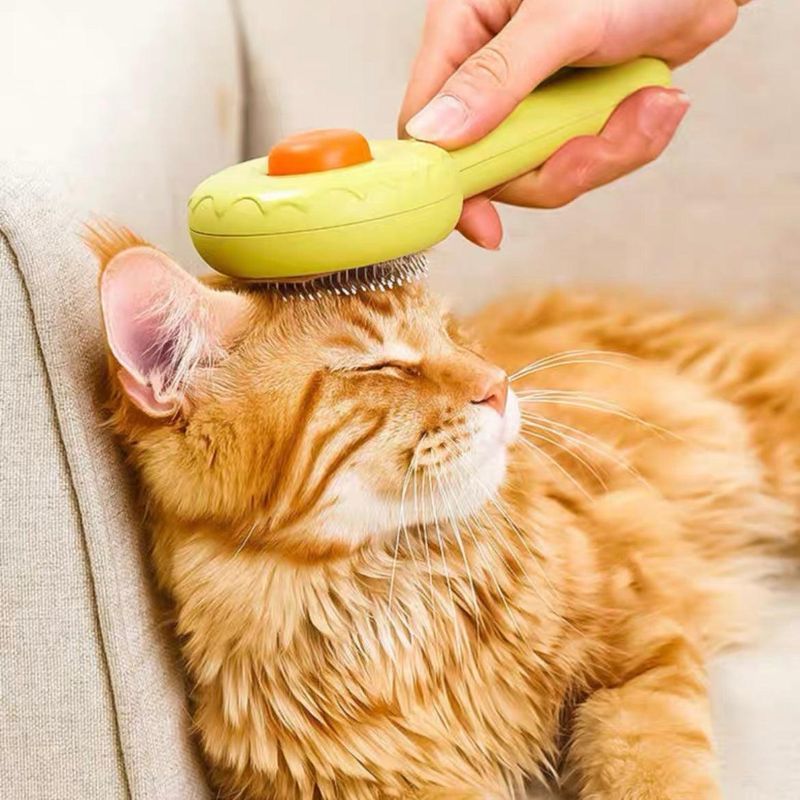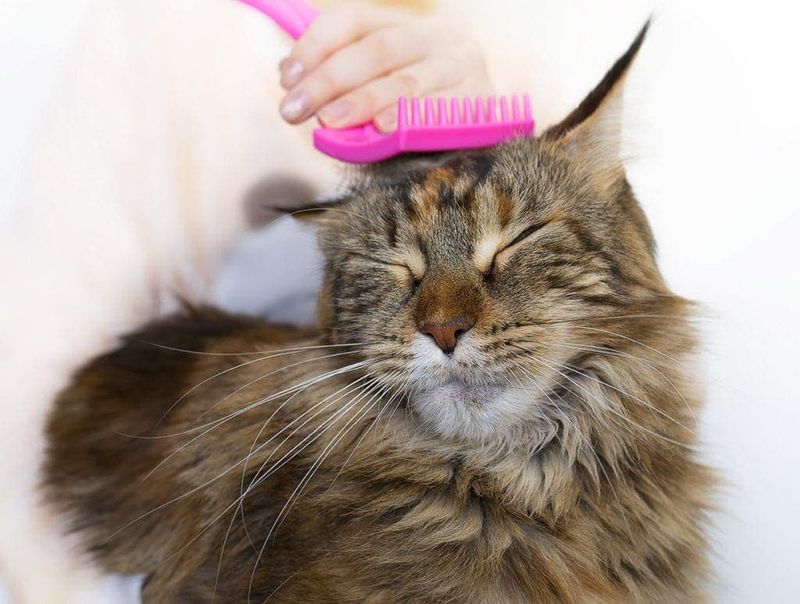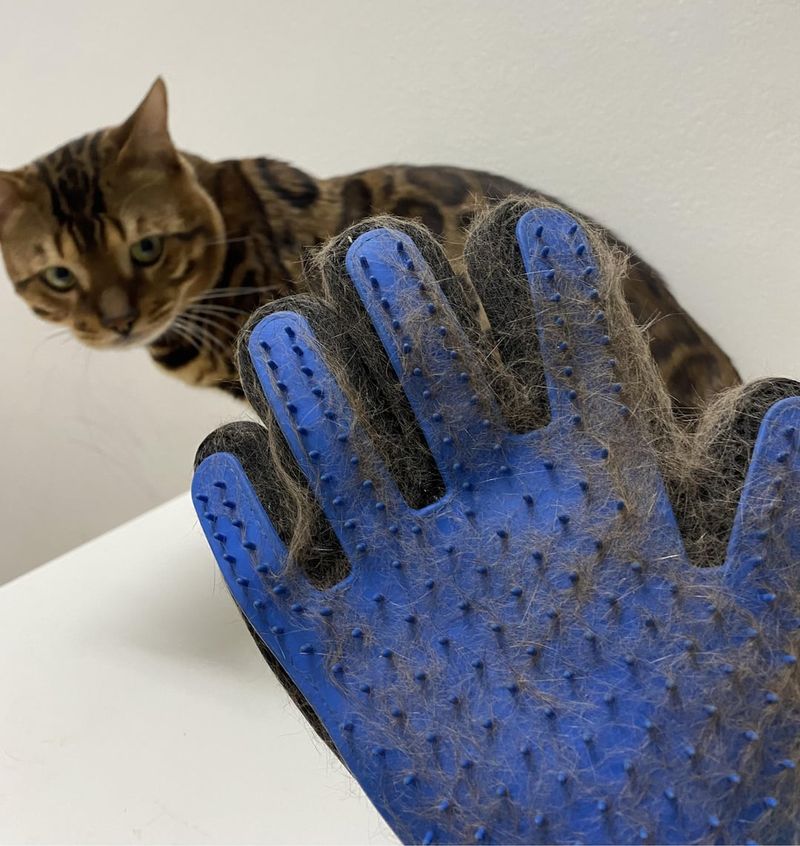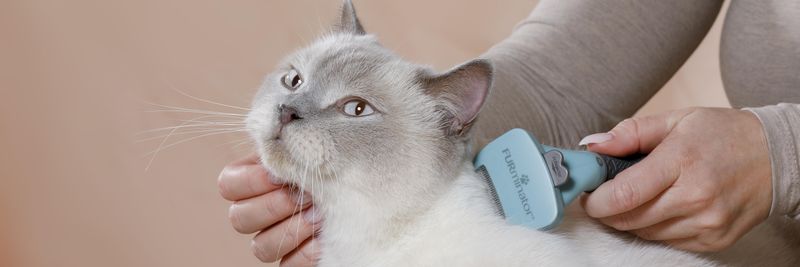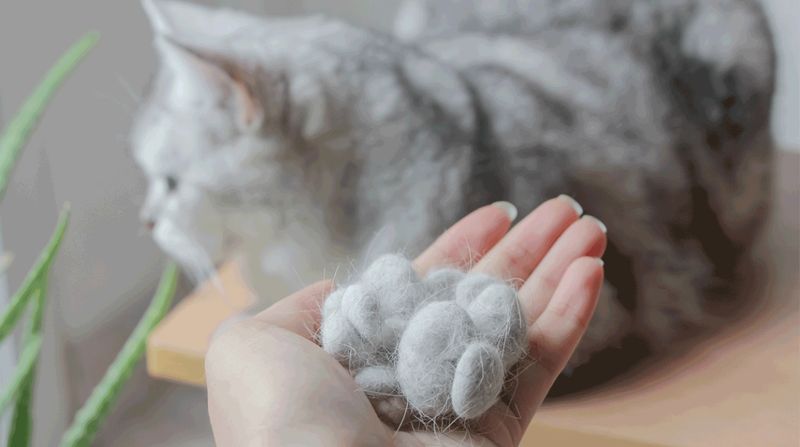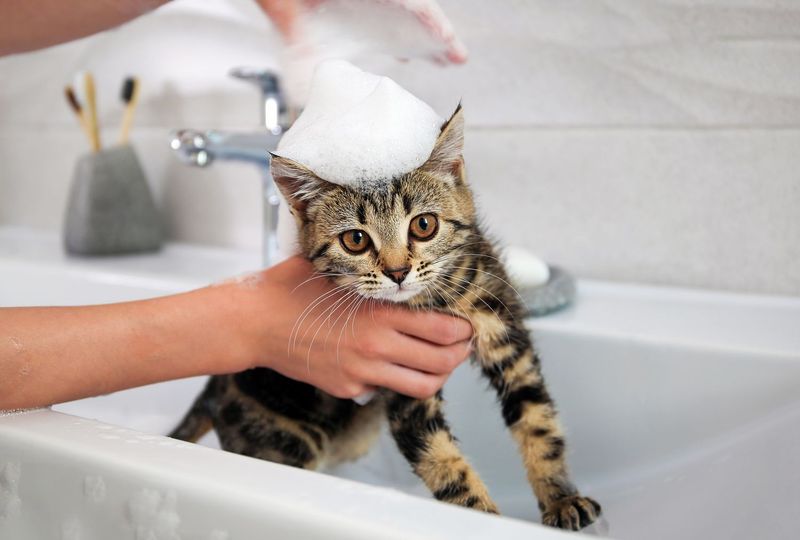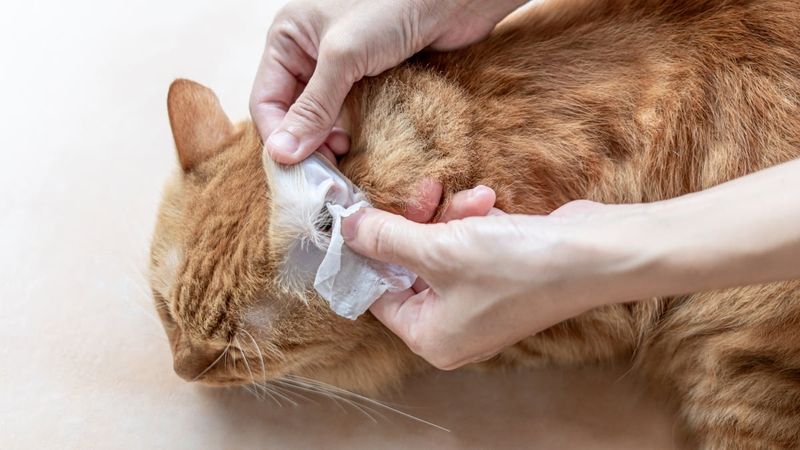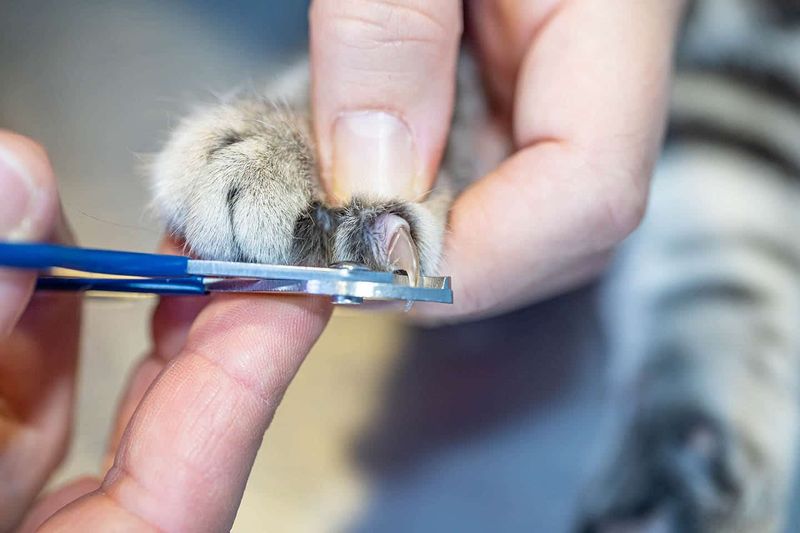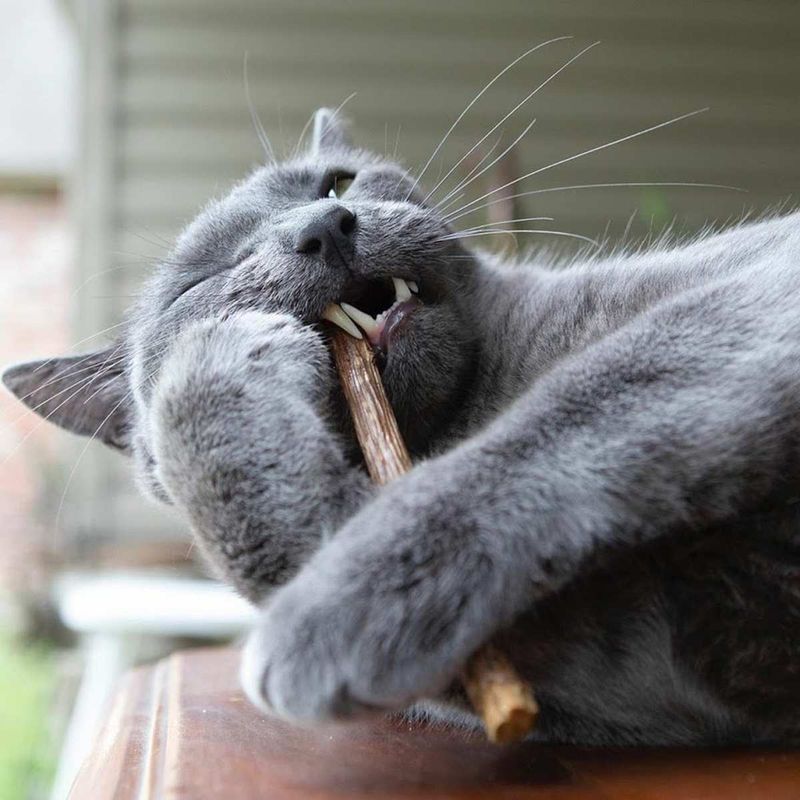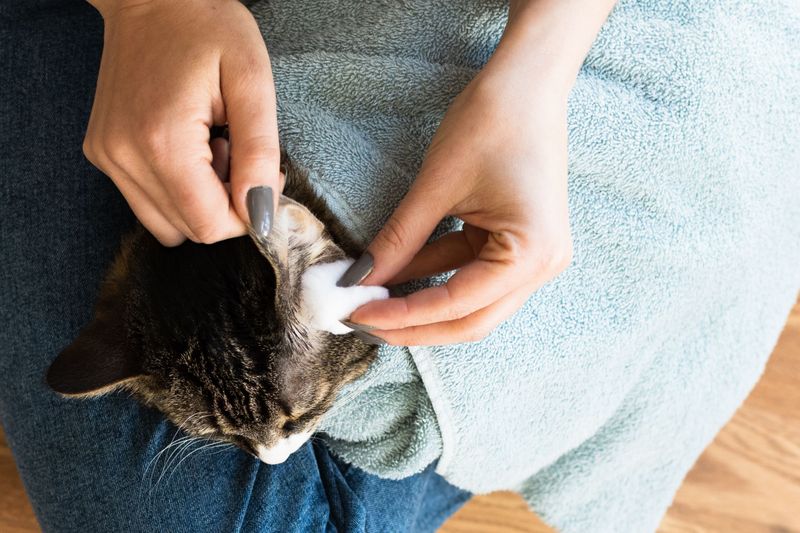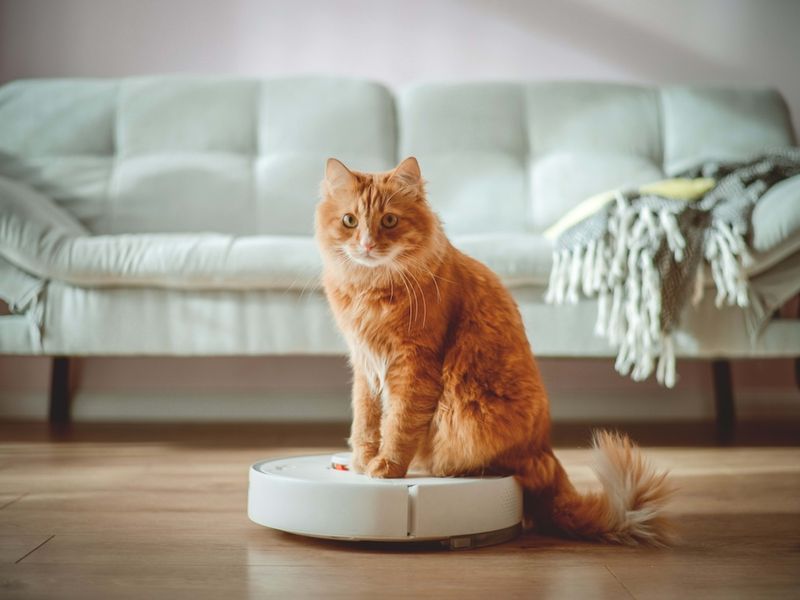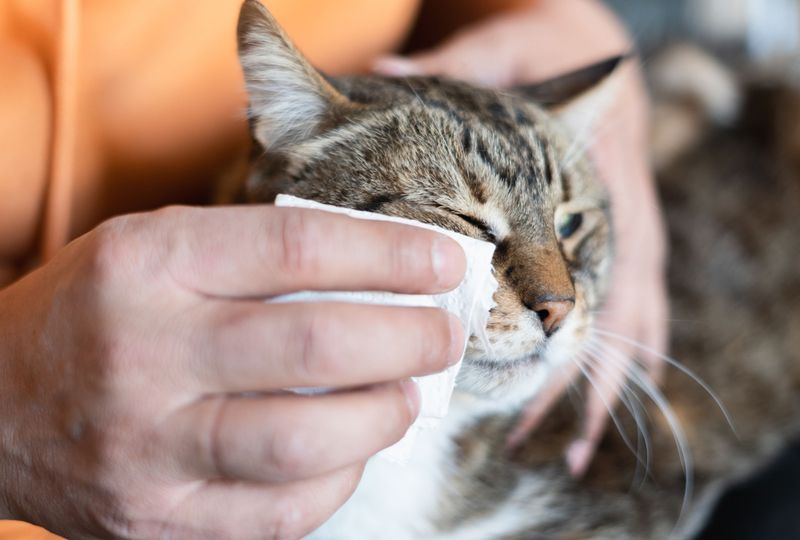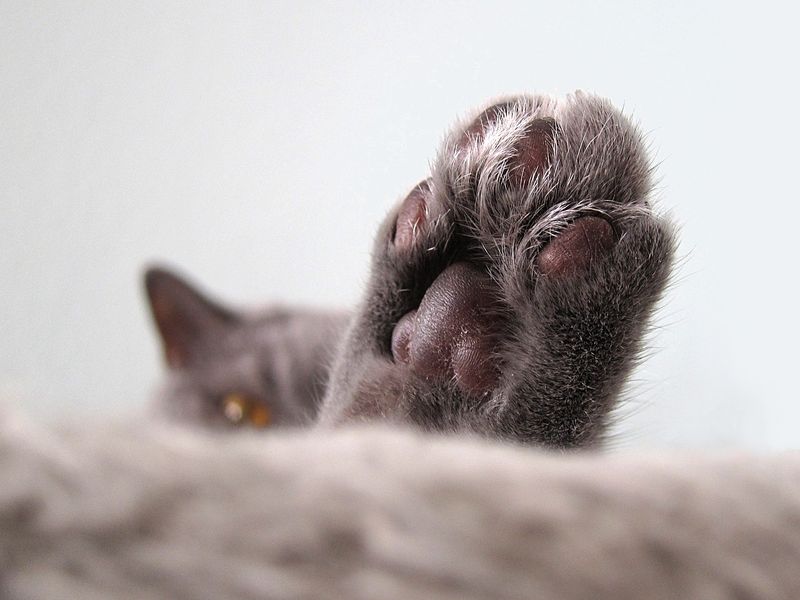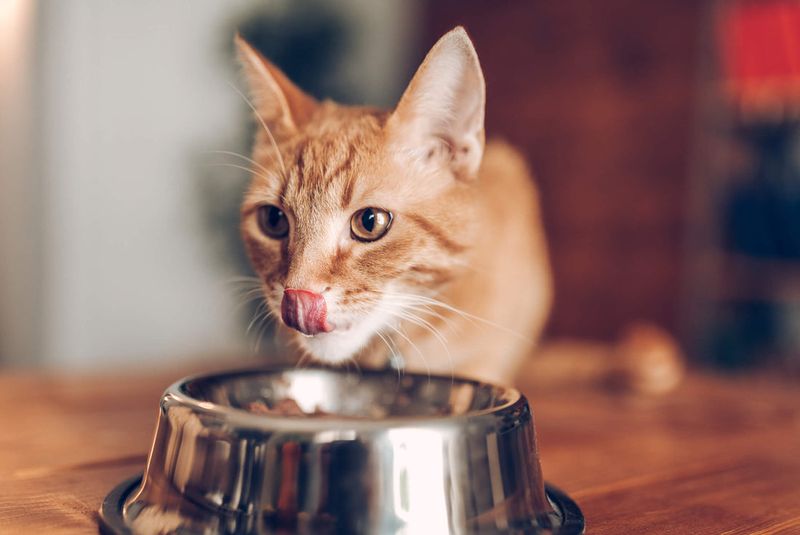📖 Table of Content:
- 1. Use a Self-Cleaning Brush
- 2. Brush During Feeding
- 3. Glove Brushes for Quick Grooming
- 4. Invest in an Automatic Deshedding Tool
- 5. Use a Damp Cloth for Loose Fur
- 6. Waterless Shampoo for Quick Cleanups
- 7. Baby Wipes for Spot Cleaning
- 8. Use Baking Soda for Odor Control
- 9. Trim Nails During Nap Time
- 10. Dental Chews for Oral Health
- 11. Routine Ear Wipes
- 12. Use a Robotic Vacuum
- 13. Tear Stain Remover Pads
- 14. Paw Balm for Dry Pads
- 15. Add Omega-3 to Their Diet
For cat owners with jam-packed schedules, keeping up with their feline’s grooming needs can feel overwhelming. A well-groomed cat is not only healthier but also happier, yet finding time for regular grooming can be a challenge. Shedding, tangled fur, and hygiene issues can quickly become problems if left unattended. However, with the right approach, maintaining your cat’s cleanliness doesn’t have to be time-consuming.
By using efficient tools and techniques, cat grooming can become a quick and stress-free routine. Simple solutions like self-cleaning brushes, grooming gloves, and waterless shampoos can significantly cut down on grooming time. Incorporating grooming into daily activities, such as brushing while your cat eats or trimming nails during nap time, can help multitask effectively. Additionally, keeping essential grooming supplies within reach makes the process faster and more convenient.
To make grooming even more manageable, focus on preventative care that reduces the need for frequent deep grooming sessions. A diet rich in omega-3 fatty acids can minimize shedding, while dental treats help maintain oral health without the hassle of brushing. Regular use of pet-safe wipes for paws, fur, and ears can prevent dirt buildup and infections. Investing in a robotic vacuum can also help control excess fur, keeping your home cleaner with minimal effort. With these strategies, busy cat owners can ensure their pets stay well-groomed without sacrificing too much time.
1. Use a Self-Cleaning Brush
A self-cleaning brush makes grooming effortless by removing collected fur with a single button press. Unlike traditional brushes that require manual fur removal, this tool saves time and reduces mess. Grooming sessions become more efficient as the brush quickly detangles and removes loose hair in a few strokes. Many cats enjoy the sensation of being brushed, making this a stress-free experience for both pet and owner. Regular brushing with a self-cleaning brush prevents excessive shedding and helps maintain a cleaner home. Choosing a high-quality brush with fine bristles ensures it reaches the undercoat, reducing the risk of matting. With minimal effort, your cat’s coat remains smooth and free of excess hair.
2. Brush During Feeding
Multitasking is an excellent way to save time, and brushing your cat while they eat is a great example. While they focus on their food, they are less likely to resist or move away, making grooming easier. This approach helps create a positive association with brushing, as they learn to link it with mealtime. Over time, cats may even look forward to being brushed as part of their feeding routine. Using a gentle brush and light strokes ensures they remain comfortable and relaxed. Since feeding times are already part of a daily schedule, adding a quick grooming session doesn’t require extra effort. By incorporating this habit, you can easily maintain your cat’s coat without setting aside separate time.
3. Glove Brushes for Quick Grooming
Petting your cat while simultaneously removing loose fur is made easy with grooming gloves. Unlike traditional brushes, these gloves allow you to bond with your cat while gently grooming them. The flexible design contours to your cat’s body, making it easier to reach tricky areas like the belly and legs. Most cats tolerate or even enjoy the sensation of being groomed with gloves, reducing resistance. Loose hair sticks to the gloves, preventing fur from spreading around your home. Cleaning the gloves is simple—just peel off the collected fur and dispose of it. With this method, you can integrate grooming into everyday interactions, making it feel less like a chore.
4. Invest in an Automatic Deshedding Tool
Technology can make pet grooming more convenient, and an automatic deshedding tool is proof of that. Unlike manual brushes, these battery-operated tools use gentle vibrations or suction to remove excess fur efficiently. Their advanced design helps reduce shedding by reaching the undercoat without pulling on your cat’s skin. Many models feature adjustable settings to accommodate different coat types and sensitivities. Because they work quickly, they’re perfect for cat owners who have limited time for grooming. Regular use of an automatic deshedding tool minimizes loose hair around the house, making cleaning easier. Investing in one of these tools simplifies grooming while keeping your cat’s coat in top condition.
5. Use a Damp Cloth for Loose Fur
A simple damp cloth can serve as a quick alternative to brushing when time is tight. By lightly running the cloth over your cat’s fur, you can capture loose hairs before they spread. This method is especially useful for short-haired cats that don’t require frequent brushing. Using a microfiber cloth ensures effective fur collection without irritating your cat’s skin. Wiping your cat down with a damp cloth also helps reduce static and prevent dust buildup in their coat. It’s an easy habit to incorporate into daily pet care, taking only a few seconds. As a bonus, this method provides a soothing, gentle touch that some cats find calming.
6. Waterless Shampoo for Quick Cleanups
Bathing a cat can be challenging, but waterless shampoo provides a stress-free alternative. Unlike traditional baths, these sprays or foams clean your cat’s fur without requiring rinsing. A few pumps of waterless shampoo effectively remove dirt, odors, and excess oils from the coat. Many formulas contain soothing ingredients like aloe vera or oatmeal, ensuring they are gentle on the skin. Quick application and towel drying make this an ideal solution for busy cat owners. Waterless shampoos are perfect for spot cleaning when your cat gets into something messy. Keeping a bottle on hand ensures you can freshen up your cat’s coat anytime without the hassle of a full bath.
7. Baby Wipes for Spot Cleaning
Pre-moistened pet-safe wipes offer a quick way to clean your cat without water. After outdoor play or litter box use, a simple wipe-down removes dirt and bacteria. These wipes are particularly useful for cleaning paws, face, and fur without causing discomfort. Hypoallergenic and fragrance-free options prevent irritation, making them safe for regular use. A pack of wipes is easy to store and carry, ensuring convenience wherever you go. Frequent use of wipes helps maintain hygiene, especially for older cats who groom less effectively. By keeping a pack nearby, you can quickly address minor messes before they become a bigger problem.
8. Use Baking Soda for Odor Control
Natural deodorizers like baking soda can keep your cat’s fur smelling fresh without harsh chemicals. A light sprinkle on the coat, followed by gentle brushing, helps absorb oils and neutralize odors. Unlike perfumes or scented sprays, baking soda eliminates smells rather than masking them. This method is especially helpful for long-haired cats who may develop lingering odors. Using a small amount ensures safety, as excessive powder could dry out the skin. Regular application between baths keeps your cat’s coat fresh while saving time on grooming. With this simple trick, you can maintain a pleasant-smelling cat effortlessly.
9. Trim Nails During Nap Time
Cats are naturally more relaxed when they are drowsy, making nap time an ideal moment for nail trimming. Instead of forcing a restless cat into a grooming session, gently clip a few nails while they doze. Using a quiet clipper reduces the chances of startling them and makes the process smoother. Handling their paws frequently when they’re awake can also help them get accustomed to touch. Trimming a few nails at a time prevents the need for a lengthy session. Over time, this method helps desensitize your cat to nail trimming, reducing stress. Keeping nail trims short and frequent ensures they stay manageable without disrupting your cat’s routine.
10. Dental Chews for Oral Health
Maintaining your cat’s dental hygiene doesn’t have to involve brushing their teeth daily. Offering dental chews is a time-saving way to reduce plaque and freshen breath. Specially designed treats help scrape away buildup while providing a tasty snack. Many dental chews contain enzymes that promote gum health and prevent tartar formation. Since most cats resist toothbrushes, chews provide an easier alternative for busy owners. Using them regularly helps prevent dental issues that could require costly vet visits. With minimal effort, your cat’s oral hygiene stays in check through a simple daily treat.
11. Routine Ear Wipes
Preventing ear infections is easy with routine cleaning using pet-safe wipes. Dirt, wax, and debris can accumulate in a cat’s ears, leading to discomfort and potential health issues. A quick wipe once a week removes buildup and reduces the risk of infections. Choosing a gentle formula ensures your cat’s sensitive ears remain irritation-free. Regular maintenance prevents the need for deep cleaning or medical intervention. Keeping ear wipes handy makes it simple to integrate this habit into your pet care routine. By staying proactive, you avoid the complications that come with neglected ear hygiene.
12. Use a Robotic Vacuum
Managing pet hair can be overwhelming, but a robotic vacuum offers a hands-free solution. These devices run on a schedule, keeping floors free of loose fur with minimal effort. Automated cleaning reduces the need for constant sweeping and vacuuming. Many models have pet-specific settings to handle fur more effectively. Since cat hair accumulates daily, having a vacuum work consistently prevents buildup. Investing in a good robotic vacuum saves time while maintaining a cleaner home. With less fur in your living space, grooming becomes more manageable.
13. Tear Stain Remover Pads
Cats with light-colored fur often develop tear stains, which can be unsightly if not cleaned regularly. Tear stain remover pads provide a fast and effective way to remove buildup around the eyes. These pre-moistened pads contain safe, non-irritating ingredients designed to break down stains. Gentle wiping each day helps prevent stains from becoming stubborn or permanent. Using circular motions ensures thorough cleaning without causing discomfort. Regular use of tear stain pads keeps your cat’s face clean and bright. With this simple step, your cat maintains a fresh and well-groomed appearance.
14. Paw Balm for Dry Pads
Cold weather and rough surfaces can lead to dry, cracked paw pads that need attention. Applying a small amount of pet-safe paw balm helps moisturize and protect sensitive paws. The balm forms a protective barrier, preventing further damage from harsh surfaces or weather conditions. Massaging the balm into the pads improves circulation and keeps them soft. Most cats tolerate this process well, especially when done gently. Using paw balm regularly prevents painful cracks that could make walking uncomfortable. Healthy paws contribute to overall well-being and mobility.
15. Add Omega-3 to Their Diet
A shiny, healthy coat starts from within, and omega-3 fatty acids play a crucial role. Adding fish oil or omega-3 supplements to your cat’s diet reduces shedding and promotes skin health. These nutrients also help prevent hairballs by improving digestion and reducing excessive grooming. Most omega-3 sources come in liquid or capsule form, making them easy to mix into food. Regular supplementation leads to softer, shinier fur and less loose hair around your home. Improved coat health means fewer grooming sessions and less fur-related mess. Keeping up with omega-3 intake benefits your cat’s overall well-being while simplifying grooming.
